frequently asked questions
While the term ‘preferred equity’ may sound familiar, it’s not unusual for developers and property owners to have questions. Below are some of the more common questions we receive from clients and lenders.
Why should I consider Preferred Equity vs. traditional equity?
PE is considerably less expensive than traditional equity for two primary reasons: 1) developers “rent our equity” for a specific short-term time frame (usually 2-4yrs), and 2) our PE structure does not include any long-term profit participation. Once the property is refinanced, or a capital event occurs, and the preferred equity principal is returned, our “rented equity” is returned to the sponsor/owner and we exit the deal.
Is Preferred Equity available as a non-recourse obligation?
Yes. In fact many developers will obtain a low-rate bank loan for the first mortgage at a 60% to 65% loan-to-cost (LTC) with limited recourse and then combine our non-recourse PE to effectively create a limited or non-recourse loan structure.
WHAT IS THE BLENDED COST OF CAPITAL WHEN UTILIZING THIS FAST PE STRUCTURE?
When combining a traditional low-rate bank construction loan of approximately 5.0%, for 65% of the total project costs, and adding FAST’s preferred equity for an additional 10% of total project costs, the blended cost of capital is only 5.93%. This blended rate for a 70-80% LTC structure is significantly less than alternative high-leverage/stretch construction loan rates, which typically range between 8-12%. See a hypothetical $40MM project below:
How quickly can FAST PE close on a transaction?
If the project is ready to start, FAST PE can issue a term sheet within 10 days and fund within 30 – 60 days.
How is FAST PE’s structure documented?
Typically our PE structure requires an amendment to the developer’s operating agreement (assuming a LLC is the single-asset entity), whereby our Preferred Membership Interest is defined and the terms and conditions are integrated into the cash flows as a Priority Return. Additionally, this amendment provides the developer with a Call Option to buy-out our Preferred Membership Interest upon the project reaching stabilization. This way the developer only “rents our equity” for the needed period of time to complete the project.
How does the cost of preferred equity differ from interest rates of a traditional construction loan?
Because FAST takes a subordinate (higher risk) position to the construction loan, our rates are higher than those of a senior lender. However, because our investment serves as a bridge between the senior loan and the sponsor’s equity, it amounts to just a small portion of the total capital stack (usually 5-15%). Thus, the impact on the sponsor’s overall cost of capital is relatively small, as seen in the table above.
what is the difference between preferred equity & mezzanine debt?
Not surprisingly, there is a great deal of confusion between Preferred Equity and Mezzanine Debt throughout the real estate world. This is due to the fact that PE and Mezz debt behave in a financially similar manner. Both are tools which enable sponsors to increase their leverage and reduce common equity requirements at similar financing costs. Both are subordinate to senior debt, and therefore both carry more risk and require a higher borrowing cost. Like Mezz debt, our PE investment is designed so that we assume no long term interest in the project. Our 2 year minimum term gives the sponsor the option to buy out our position after 24 months by repaying our initial investment plus the stated interest. While their financial characteristics, and purpose for the sponsor are similar, their differences appear in their legal structures.
Securing Mezzanine Debt requires an inter-creditor agreement with the senior construction lender, most of whom are reluctant, or outright opposed, to sponsors’ placing additional debt within the partnership.
FAST Preferred Equity secures its position in the capital stack by taking a ‘temporary’ ownership stake as a preferred member within the ownership entity for the duration of construction. This requires a restructuring of the partnership’s operating agreement, but allows entity to characterize the capital as equity (as opposed to debt) and achieve senior lenders’ equity requirements. Upon completion of construction, the sponsor can execute their call option and buy out/pay off FAST’s initial investment, plus preferred return, at which point 100% ownership reverts to the common members.

